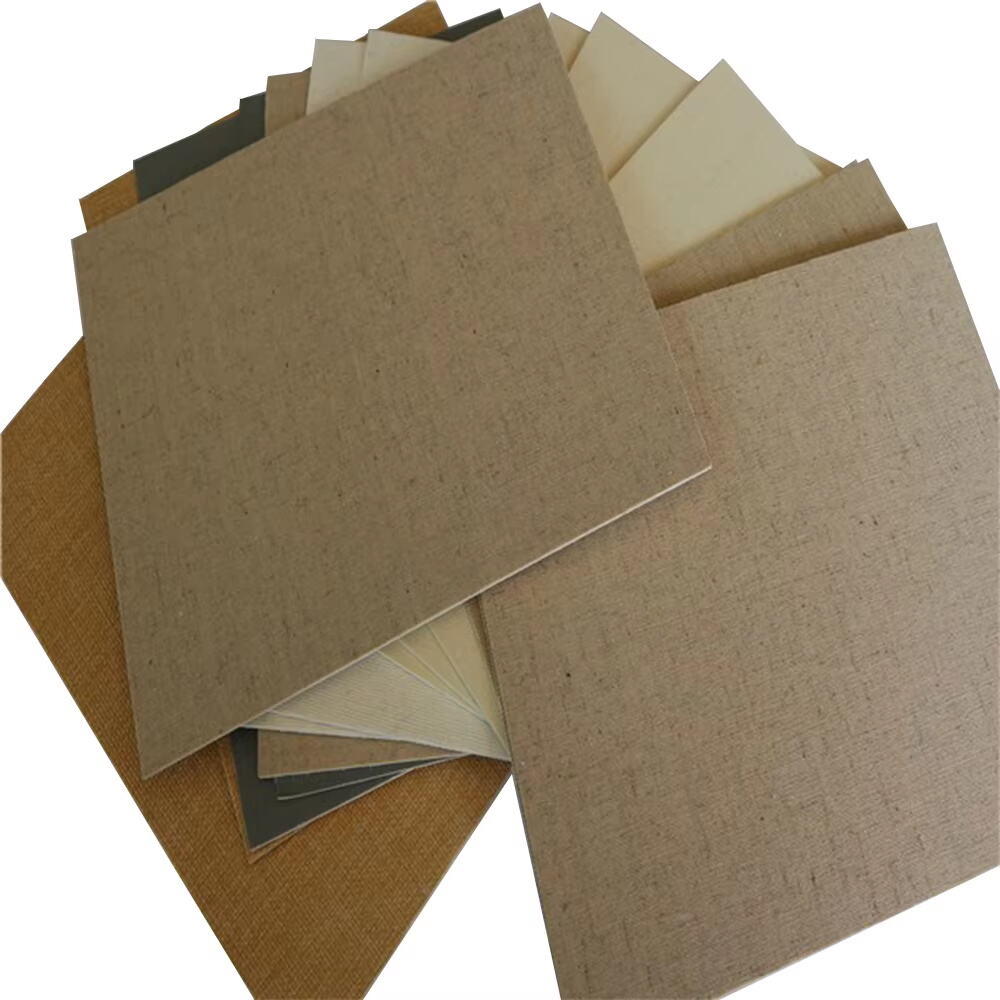Hva definerer museumsklassematteplater?
Nøkkelversjoner i sammensetningen
Museumsklasse matteplater lages av de beste kvalitetsmaterialene, nesten alle enten 100% bomull eller alpha-sellulose. Denne unike sammensetningen er i skarp kontrast til vanlige plater, som typisk inneholder trepulp, noe som igjen kan føre til syre og potensielt skade verket. Rollelsen av sammensetning for lengde på livstid kan ikke understreges nok. Fordi trykte 5-ply-matteplater bruker syrefrie komponenter – inkludert museumsklasseplater – er det mye mindre matte- og kunstdisfargning og forringelse over årene, når den aldres. Ifølge studier kan malerier vare noen tiår ekstra hvis de gjøres på syrefrie sammensetninger. Dette gjør dem til en viktig valgmulighet for både samler og bevaringsfolk som ønsker å opprettholde deres verdifulle mynter.
Næringsstandarder for bevaring
Strikte bevarelsesstandarder satt av bransjeførende organisasjoner som American Institute for Conservation (AIC) følges for kvaliteten på matbrettene. Målet med disse retningslinjene er å unngå skadelige kjemiske eller fysiske interaksjoner som kan skade objektet. Og med strikte sertifiseringer kan du stole på at disse materialene er fri for kjemikalier, renlige og miljøvennlige, hvilket gjør FPB til det mest varige og pålitelige visningsbrettet for fine samlinger. Bransjestandarden anbefaler at disse matbrettene skal vare i 100 år, basert på tester utført av materialforskere. Slike referansepunkter gir trygghet ikke bare for samletere og kuratorer, men også for skattene selv, trygge for fremtidige generasjoner.
Syrefri beskyttelse mot forringelse
Fordeler med nøytral pH-balanse
Viktigheten av pH-balans For å beskytte et kunstverk over tid, enten rammet med eller uten glass, er det viktig å følge en strikt pH-forsvarssystem. Laget for et nøytralt pH, beskytter disse matbrettene mot syrefikasjon og skade, og beskytter kunstverket ditt fra skader som aldri kan repareres. Syrefritt matbrett motstår skadelige effekter av forurensninger bedre over tid enn andre mindre dyre former for matbrett. Studier av uavhengige bevaringsorganisasjoner viser at matsedler laget av syrefrie materialer, som de som brukes hos Hallmark, har en dramatisk positiv effekt på livstiden til en trykk. Denne bestandigheten understreker viktigheten av matbrett i kunstbevaring – matbrettet vil være festet til kunstverket i lang tid, så det må være av høyest kvalitet.
Forhindre oksidasjon og guling
UV-skyddet, museumskvalitet matteplade er til stede for å forhindre noen former for flekker, og mattepladen selv er skåret med en skråning for å virkelig fremheve rammen mens mattene er spesielt behandlet for å motstå aldring og fargeforandring fra lys eller luft. Disse flere lagene beskytter fargen din fra dens velkjente fiende: Det Store Utendørs, herunder solen, luften og vannet som ville ha degradert den over tid med mindre kvalitetsmaterialer. Dette har blitt bekreftet gjennom regelmessige tester som viser at ved å bruke disse syrefrie plater og UV-skyttende materialer, vil ditt rammede kunstverk forblir levende i opp til 200 år under riktige forhold. Museumsgoder overalt anbefaler å ramme verdifulle malerier med bevaringsglass som ikke bare motsetter seg oksidasjon men også fargeforandring, begge deler som skader skatter over tid. Bruken av UV-skyttende matteplader kan roføre samlerne og kuratorane i at samlingene deres vil forblir i god stand.
Overlegne Materialeholdbarhetsegenskaper
Bomullsfiber Varighet
Bomullsfiber har tjent seg en rykte som den fineste av museumsplater, og bomullskjernen i vår museumsplate er av høyest kvalitet - kjemisk renset naturlig bomull, som er den reneste formen for naturlig cellulose du kan få. Når det brukes i matbrett, gir bomullsfiber bretten motstandsdyktighet mot skade for å hjelpe med å beskytte et hovedbilde i lang tid. Forskning har vist at bomullspapirer er de mest motstandsdyktige mot krølling og nedbrytning av alle plater som er tilgjengelige for bevaringsmiljøet – spesielt i miljøer med høy fuktighet eller høy temperatur. Denne lange varigheten beholder ikke bare fine kunstverker i generasjoner, men spare deg også for ulempene ved å måtte bytte ut et slitt økonomisk liner, noe som kan koste ganske mye over tid.
Krølingsmotstandende konstruksjon
Krumningsmotstand er også nøkkelen til våre museumsklasse matplater, som er designet til å klare de harskeste vilkår, men for skjoldingsvilkår. Den ubesettende polly pro sammensetning bruker flere lag for å avvise fuktighet og temperatur som studier har vist. Ved å holde plattene flat og stabile, er denne designet avgjørende for kunstverkets tilstand. Kunsteksperter anbefaler også å ikke bruke materialer som er nøyaktig mot krumning for å beskytte din kunst i årvis, disse gamle designene var ideelle for bevarelse av uverdt kulturell eller familieartefakter.
Estetiske fordeler for kunstpresentasjon
Profesjonelle fullføringsmuligheter
Rammer av museumskvalitet kommer i en rekke farger, tekster og finisher, inkludert silke, skinn, glad og avbrukt. Disse valgene gir en tilpasset følelse for foretrukne visninger av kunst. Typen finish på et produkt kan ha en stor effekt på hvordan et stykke oppfattes, med et godt gjennomført mattfinish som forbedrer utseendet og følelsen av kunsten, noe som gir en mer uttryksstark inntrykk. Flere studier understreker rollen som visuell presentasjon spiller i salg av kunstverk, og de foreslår at et profesjonelt finish legger til oppfatte verdi, noe som betyr at din kunst ikke bare er pen å se på den er også mer verdifull i øynene på tilskuere.
Tilpasset fargejustering
Tilpasset farge Tilpasset farge tilbyr et avansert tilpasningsvalg som er enkelt å håndtere i kunstverker og gir en konkurransedyktig fordel på utstillings- og vistingsarrangementer, da det gjør at andre og tredje bestillinger kan kontrolleres og administreres mer enkelt. Å støtte historiene innenfor et kunstverk forbedres ved bruk av matbrett som komplementerer fargene i kunstverket – å passe matfargen til kunstverket fører til sin egen form for fortelling og hjelper til å få betrakters øye til å bevege seg uforstyrret gjennom hele verket. Eksperter innen kunstnæringslivet anbefaler regelmessig dette, og refererer til dets evne til å forbedre både verdien og presentasjonen av kunstverker. Tillegg av fargekoordinering gjør enda mer for den kunstneriske fortellingen, og gjør at matbrettet blir en del av kunstverket i stedet for å se ut som om det ikke hører til.
Verdimultiplikasjon for kunstsamlinger
Opprettholdelse av integritet i kunstverk
Museumsunderlag er ekstremt viktige for beskyttelsen av kunstverk. Disse platerne er laget spesifikt for å hindre at kunsten kommer i direkte kontakt med noen skadelige materialer og gir både fysisk og kjemisk beskyttelse. Denne typen oppmerksomhet er nødvendig når man skal bevare utseendet på kunstverk. Forskning om kunstbevaring viser at verker rammet med museumsstandardmaterialer varer lenger og motsetter seg bleking, guling og skade i større grad enn standardpresentasjon. Profesjonelle kunstnere stoler på de syrefrie, ligninfrie MUSEO-plater for å beskytte sine kunstverk mot bleking og fargeforandring.
Samler-Grad Bevaring
Bevaringsgraden som er valgt for en kunstsamling kan spille en avgjørende rolle i vurderingen og levetiden på samlingen. For beste resultat arbeider vi med høykvalitets matplater for å beskytte innholdet, slik at artefaktene forblir i sin nåværende verdi- og betydningsnivå. Dette tillegget av bedre ramematerialer etablerer en varig, fremtidig markedverdi av kunstverket, og det er et avgjørende punkt for den viktige samleren. For et godt investering, velg riktig ramme og montering. Varene kan selges lettere hvis du bruger pengene klokt ved å velge ramme og montering, da de kan ha en betydelig påvirkning på salgsverdien, spesielt hvis det er et høyverdifuldt kunstverk. Og forskning indikerer at valget av kvalitetsmaterialer kan være avgjørende for å opprettholde både estetisk og monetær verdi i kunstsamlinger.
Ofte stilte spørsmål
Hva er museumsstandard matbrett?
Musee-kvalitets matplater er spesialiserte plater brukt i kunstbevaring, laget av de høyeste kvalitetsmaterialene som 100% bomull eller alpha cellulose, for å sikre varighet og forhindre nedbryting.
Hvorfor er surfri materiale viktig?
Surfrie materialer er avgjørende da de forhindre kjemiske reaksjoner som kan nedbryte både matplaten og kunstverket, og utstrakte livstiden til verkstykket betydelig.
Hvordan goder UV-motstand kunstverk?
UV-motstandsdyktige lag i matplater beskytter kunstverk fra oksidasjon og guling, for å sikre at fargene forblir levende og at verkstykket behold sin opprinnelige tilstand over tid.
Hva betyr konstruksjon mot forvrinking?
Konstruksjon mot forvrinking henviser til designet på mat-brett som inkluderer flere lag for å motstå variasjoner i fuktighet og temperatur, og dermed bevare det originale formen på kunstverket.
Kan sluttføringer på mat-brett påvirke framstillingen av kunstverk?
Ja, sluttføringer på mat-brett kan forbedre framstillingen av kunstverk ved å legge til visuell attraktivitet; det finnes valg som glatt, teksturert og avbrukt sluttføringer for å tilpasse ulike estetiske behov.
Innholdsfortegnelse
-
Hva definerer museumsklassematteplater?
- Nøkkelversjoner i sammensetningen
- Næringsstandarder for bevaring
- Syrefri beskyttelse mot forringelse
- Fordeler med nøytral pH-balanse
- Forhindre oksidasjon og guling
- Overlegne Materialeholdbarhetsegenskaper
- Bomullsfiber Varighet
- Krølingsmotstandende konstruksjon
- Estetiske fordeler for kunstpresentasjon
- Profesjonelle fullføringsmuligheter
- Tilpasset fargejustering
- Verdimultiplikasjon for kunstsamlinger
- Opprettholdelse av integritet i kunstverk
- Samler-Grad Bevaring
- Ofte stilte spørsmål

